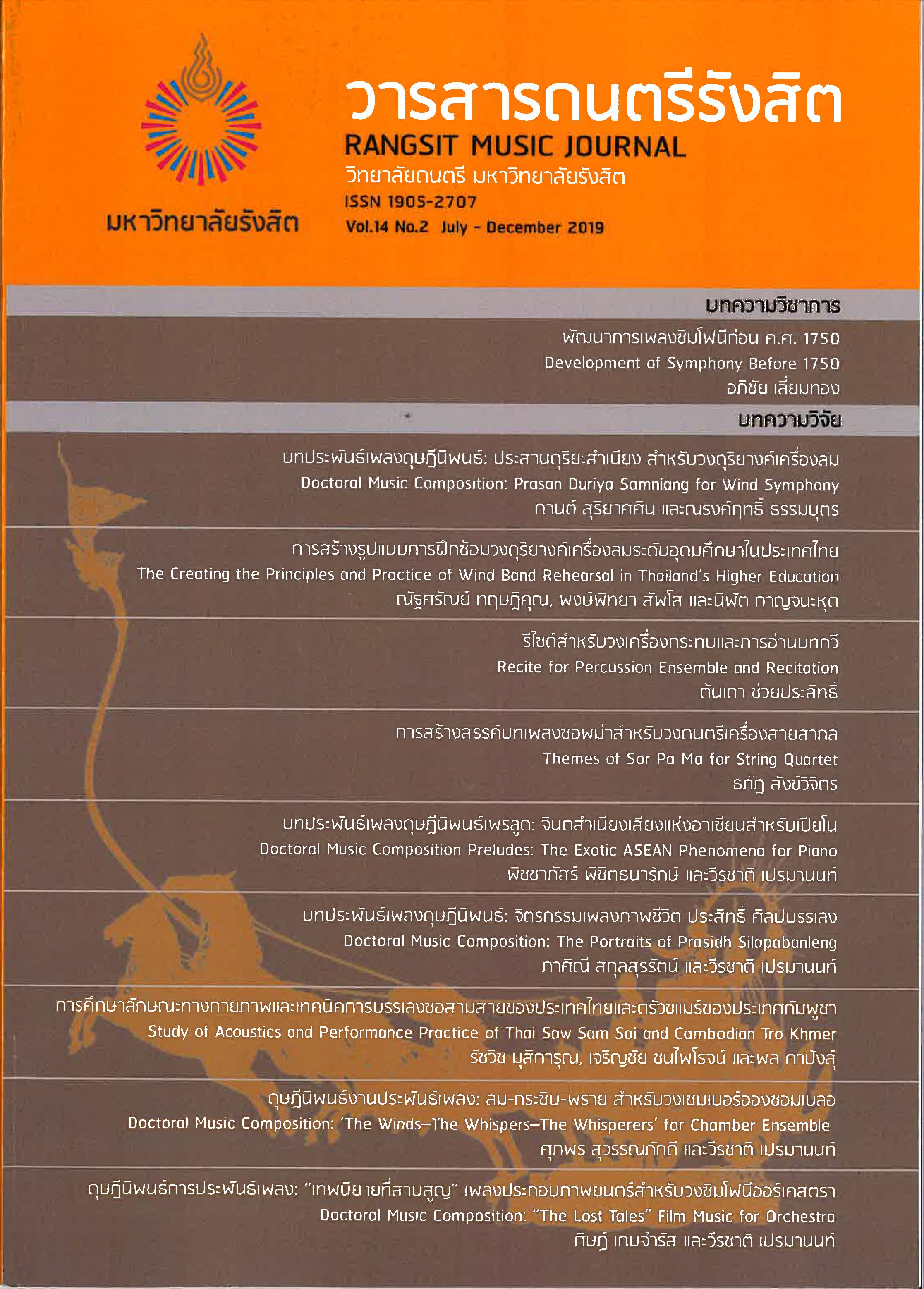Study of Acoustics and Performance Practice of Thai Saw Sam Sai and Cambodian Tro Khmer
Keywords:
Saw Sam Sai, Tro Khmer, Southeast Asian MusicAbstract
This study is intended to analyse the performance techniques of three stringed fiddles in Thailand and Cambodia. The research found that the saw sam sai and the tro khmer are spike fiddles, which have a pivot point at the front. The instruments differ slightly in their composition, as the components of the tro khmer are adjusted to make playing more convenient. The instruments are played using special techniques, which have specific names for the saw sam sai but not for the tro khmer. Results show that there are slight differences in the fiddling technique of the two instruments, for tro khmer players use their fiddle to generate the rhythm of the music in the absence of accompanying percussion. From field work, it was found that the knowledge concerning saw sam sai and tro khmer was really lacking in Thailand and Cambodia, which reflects the social attitudes towards the instruments in both countries. While the status of the instruments remains traditionally high, the popularity is on the wane. This and other research projects are necessary for the continuation of a rich tapestry of musical culture in Thailand and Cambodia.
References
2. Arunrat, Udom. Book of Siamese Music. Bangkok: Mahidol University Press, 1991. (in Thai)
3. Dyer, Jeffrey M. “Nationalist Transformations: Music, Ritual, and the Work of Memory in Cambodia and Thailand.” Yale Journal of Music & Religion 3, 2 (2017): 26-42.
4. Jähnichen, Gisa. “The Spirit’s Entrance: Free Metric Solo Introductions as a Complex Memory Tool in Traditional Khmer Wedding Music.” In Music and Memory, edited by Chieng, J. ,and Gisa Jähnichen, 51-70. Serdang: Universiti Putra Malaysia, 2012.
5. Miller, Terry E. “Appropriating the Exotic: Thai Music and the Adoption of Chinese Elements.” Asian Music 41, 2 (2010): 113-148.
6. Miller, Terry E., and Sam-Ang Sam. “The Classical Musics of Cambodia and Thailand: A Study of Distinctions.” Ethnomusicology 39, 2 (1995): 229-243.
7. Miller, Terry E., and Sean Williams. “Waves of Cultural Influence.” In The Garland Encyclopedia of World Music. Volume 4, Southeast Asia, edited by Miller, Terry E., and Sean Williams, 55-86. New York: Garland, 2017.
8. Rungrueang, Panya. History of Thai Music. Bangkok: Thai Wattana Panit, 1995. (in Thai)
9. Simon, Artur. “Southeast Asia: Musical Syncretism and Cultural Identity.” Fontes Artis Musicae 57, 1 (2010): 23-34.
10. Tully, John. A Short History of Cambodia: From Empire to Survival. London: Allan and Unwin, 2005.
11. Va, Bophary. Pithi Sampeah Kru Phleng Mahori at the Royal University of Fine Arts, Cambodia. Bangkok: Mahidol University Press, 2008.
12. Zimmer, Zachary, and others. “Migrant Interactions with Elderly Parents in Rural Cambodia and Thailand.” Journal of Marriage and Family 70, 3 (2008): 585-598.







